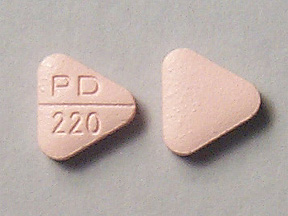Accuretic Dosage
Generic name: QUINAPRIL HYDROCHLORIDE 20mg, HYDROCHLOROTHIAZIDE 25mg
Dosage form: tablet, film coated
Drug class: ACE inhibitors with thiazides
Medically reviewed by Drugs.com. Last updated on Sep 8, 2025.
As individual monotherapy, quinapril is an effective treatment of hypertension in once-daily doses of 10 to 80 mg and hydrochlorothiazide is effective in doses of 12.5 to 50 mg. In clinical trials of quinapril/hydrochlorothiazide combination therapy using quinapril doses of 2.5 to 40 mg and hydrochlorothiazide doses of 6.25 to 25 mg, the antihypertensive effects increased with increasing dose of either component.
The side effects (see WARNINGS) of quinapril are generally rare and apparently independent of dose; those of hydrochlorothiazide are a mixture of dose-dependent phenomena (primarily hypokalemia) and dose-independent phenomena (e.g., pancreatitis), the former much more common than the latter. Therapy with any combination of quinapril and hydrochlorothiazide will be associated with both sets of dose-independent side effects, but regimens that combine low doses of hydrochlorothiazide with quinapril produce minimal effects on serum potassium. In clinical trials of ACCURETIC, the average change in serum potassium was near zero in subjects who received HCTZ 6.25 mg in the combination, and the average subject who received 10 to 40/12.5 to 25 mg experienced a milder reduction in serum potassium than that experienced by the average subject receiving the same dose of hydrochlorothiazide monotherapy.
To minimize dose-independent side effects, it is usually appropriate to begin combination therapy only after a patient has failed to achieve the desired effect with monotherapy.
Therapy Guided by Clinical Effect
Patients whose blood pressures are not adequately controlled with quinapril monotherapy may instead be given ACCURETIC 10/12.5 or 20/12.5. Further increases of either or both components could depend on clinical response. The hydrochlorothiazide dose should generally not be increased until 2 to 3 weeks have elapsed. Patients whose blood pressures are adequately controlled with 25 mg of daily hydrochlorothiazide, but who experience significant potassium loss with this regimen, may achieve blood pressure control with less electrolyte disturbance if they are switched to ACCURETIC 10/12.5 or 20/12.5.
Replacement Therapy
For convenience, patients who are adequately treated with 20 mg of quinapril and 25 mg of hydrochlorothiazide and experience no significant electrolyte disturbances may instead wish to receive ACCURETIC 20/25.
Use in Renal Impairment
Regimens of therapy with ACCURETIC need not take account of renal function as long as the patient's creatinine clearance is >30 mL/min/1.73 m2 (serum creatinine roughly ≤3 mg/dL or 265 µmol/L). In patients with more severe renal impairment, loop diuretics are preferred to thiazides. Therefore, ACCURETIC is not recommended for use in these patients.
More about Accuretic (hydrochlorothiazide / quinapril)
- Check interactions
- Compare alternatives
- Pricing & coupons
- Reviews (1)
- Drug images
- Latest FDA alerts (3)
- Side effects
- During pregnancy
- Drug class: ACE inhibitors with thiazides
- En español
Patient resources
Professional resources
Related treatment guides
See also:
Further information
Always consult your healthcare provider to ensure the information displayed on this page applies to your personal circumstances.


